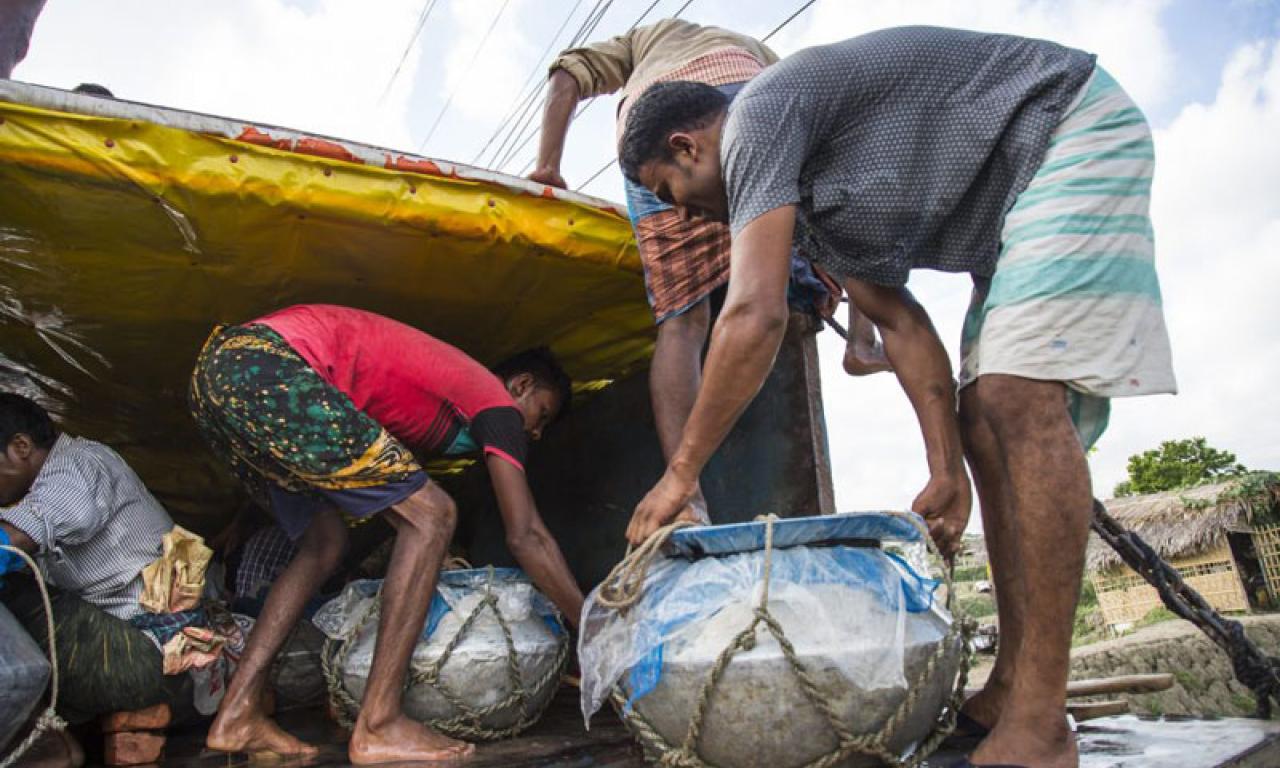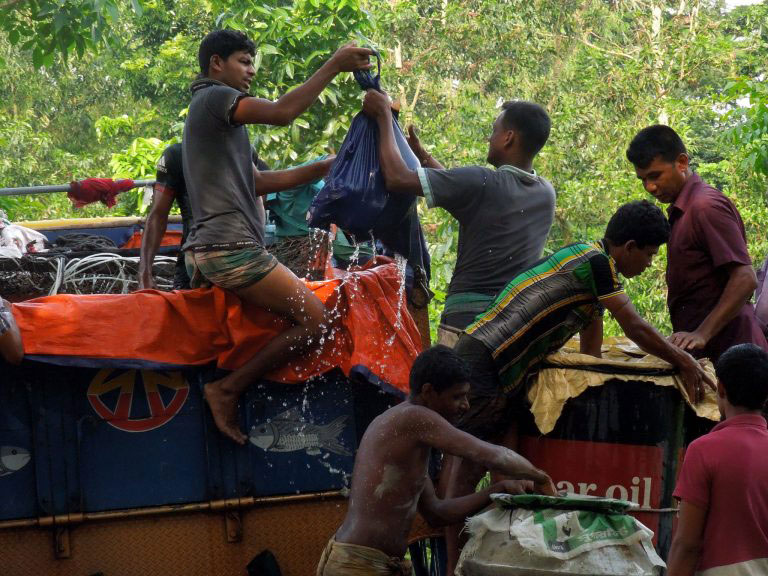
Approximately 200 metric tons of live fish are transported to markets every day in Bangladesh. The onset of COVID-19 disrupted these transportation networks and threatened the health, safety, and livelihoods of aquaculture value chain actors. Forced to travel to markets in crowded rickshaw vans, fish farmers and traders experienced high risk of exposure to COVID-19 and risked major economic losses.
Approximately 200 metric tons of live fish are transported to markets every day in Bangladesh. The onset of COVID-19 disrupted these transportation networks and threatened the health, safety, and livelihoods of aquaculture value chain actors. Forced to travel to markets in crowded rickshaw vans, fish farmers and traders experienced high risk of exposure to COVID-19 and risked major economic losses.
Demand for live fish exceeds that of iced dead fish in Bangladesh and fetches a significantly higher price at market. However, poor handling and transportation practices lead to high fish mortality, resulting in lost food and income. Low quality of the surviving fish leads to diminished returns and exacerbates economic losses caused by the pandemic, which impacted access to markets for fish farmers, fish traders, and consumers.
A new set of guidelines developed by WorldFish seeks to promote proper fish handling to ensure social distancing while supporting the health and survival of live fish, encompassing the journey from pond to market.
The guidelines recommend evidence-based changes to harvesting and transportation practices to support both fish and human health, strengthening the resilience of aquaculture operators subjected to value chain disruptions, said Colin Shelley, WorldFish project leader and the guide’s co-author.
Reduced fish mortality during transport ultimately leads to larger profits, vital in a country where over 20 percent of the population lives below the poverty line. Building the capacity of the country’s aquaculture sector via improved production and transport will bolster the income of the rural poor involved in aquaculture operations, he added.
The publication, Guide to improving live fish transportation with special attention to the COVID-19 pandemic, was produced as part of the Aquaculture: Increasing Income, Diversifying Diets and Empowering Women project, implemented by WorldFish and funded by the Bill & Melinda Gates Foundation.
Improving health and economic outcomes

While Bangladesh is the fifth largest aquaculture producer in the world, trade and travel restrictions limited the ability for small-scale fish farmers to safely and effectively sell their products.
“When travelling to markets, fishers in vehicles couldn’t easily respect social distancing. In addition, fish farmers lost revenue as potential customers couldn’t physically access the fish markets,” said Francois Rajts, the guide’s co-author.
Aiming to improve health and economic outcomes, the transportation guide advises on ways to minimize human contact and improve the handling of live fish—increasing animal welfare and the quality of fish that can be sold for a higher price.
“The adoption of these guidelines will benefit vulnerable aquaculture value chain actors in Bangladesh, boosting their income and safety,” said Rajts.
Shelley and Rajts recommended fishers use dip nets with long handles to load fish from ponds onto transportation trucks. The risk of COVID-19 transmission increases when fish are transferred using dip nets with short handles or physically by hand from one fisheries’ operator to another. To reduce fish pathogen transmission, the researchers advised nets be sanitized between uses in different ponds.
Following harvest, fish are often shipped in open truck systems that can lose up to 50 percent of their water content during transport and have insufficient aeration. Continuous aeration is necessary to supply dissolved oxygen to the water while eliminating carbon dioxide in order to reduce fish stress. Insufficient water quality during transport, measured by dissolved oxygen content, temperature, pH, CO2, and ammonia, can result in high mortality and poor quality of the remaining fish.
To ensure fish arrive at market in good condition, the guidelines advised changes to conditioning practices. A relatively new practice in Bangladesh, conditioning decreases fish stress and improves fitness. After being harvested from ponds, fish are relocated to conditioning tanks that allow them to acclimate to a new environment before transportation begins.
The new conditioning protocol calls for: no feeding 48 hours prior to transport to reduce waste; fish to be relocated to conditioning tanks twelve hours before transport to allow them to adapt to changes in water quality; and fish to be transported at night or early morning to avoid extreme temperatures.
“Learning from our experiences during COVID-19, WorldFish will continue to roll out the newest information to value chain actors and work with the Department of Fisheries to make fish value chains more efficient and resilient, supporting human health and economic opportunities,” said Shelley.
